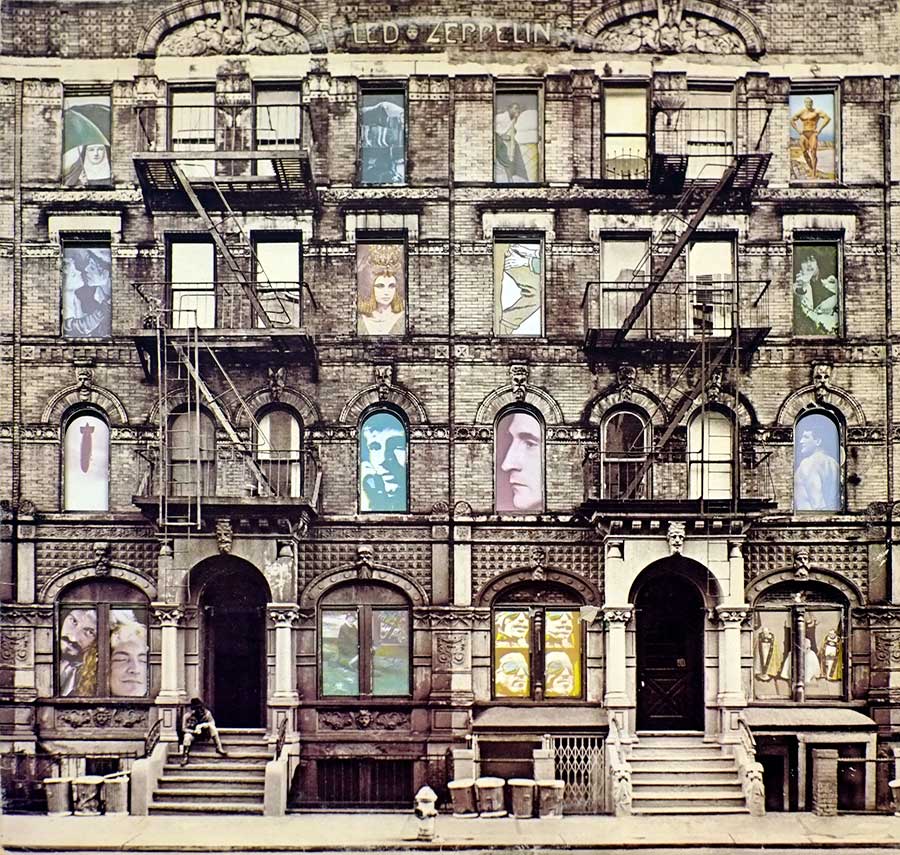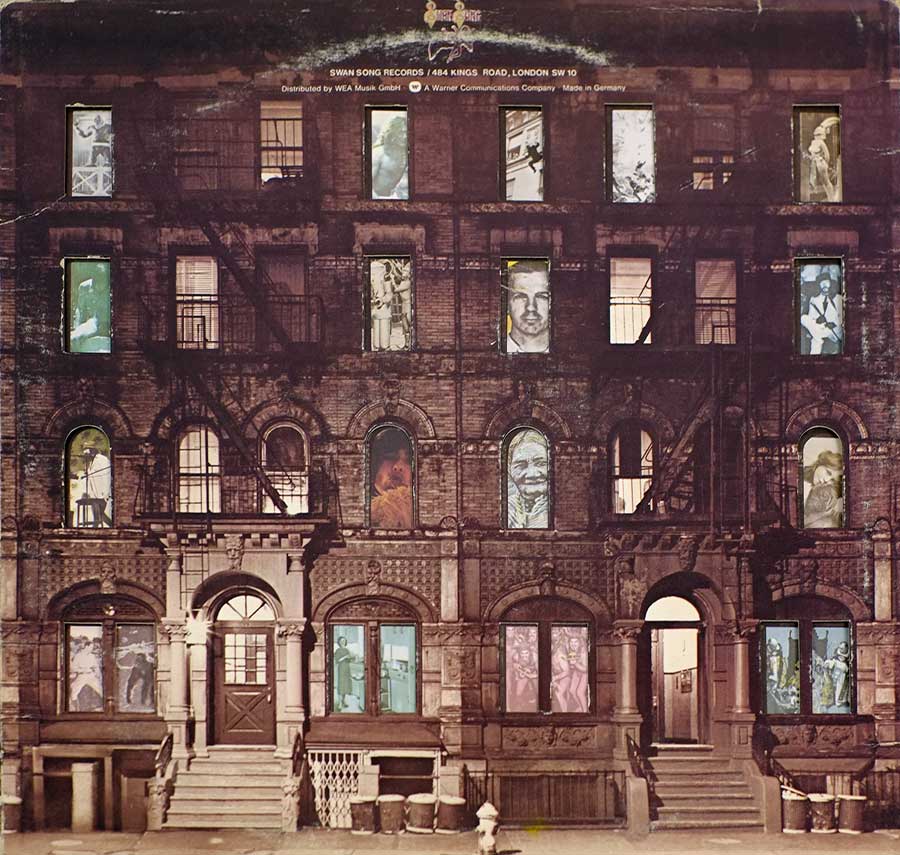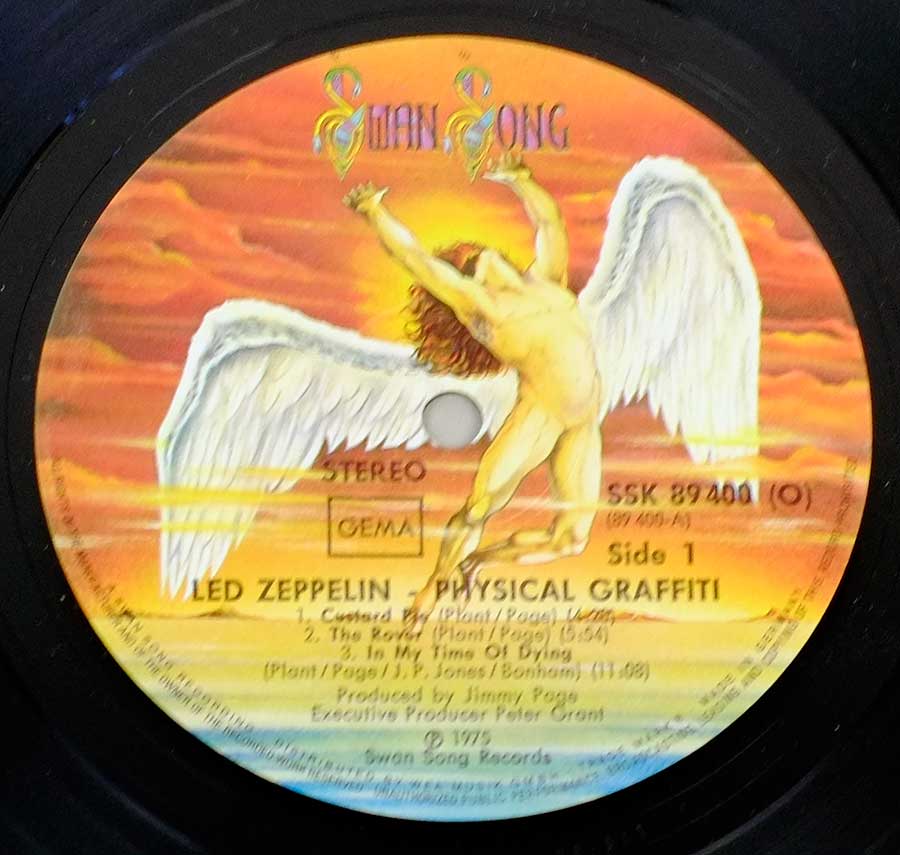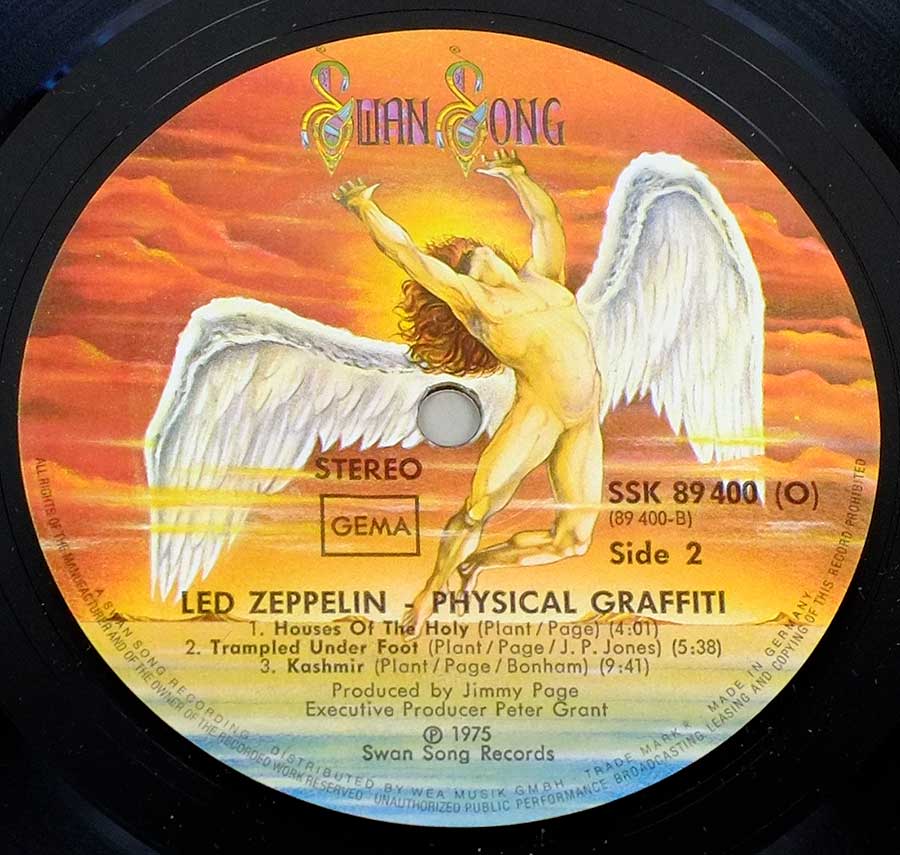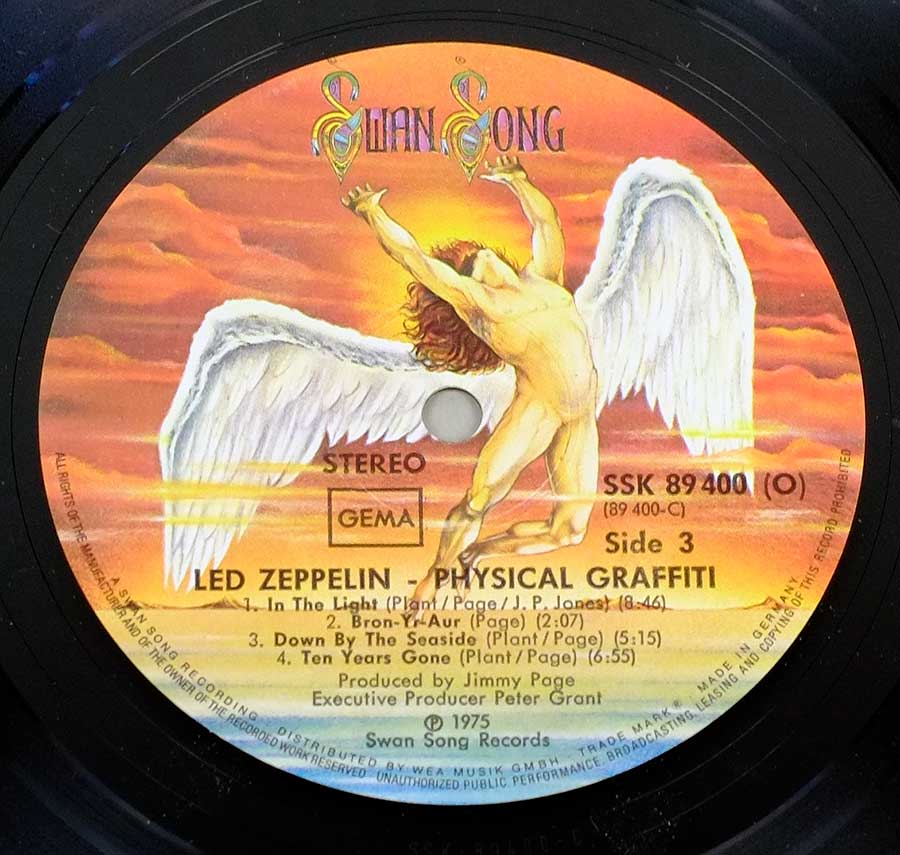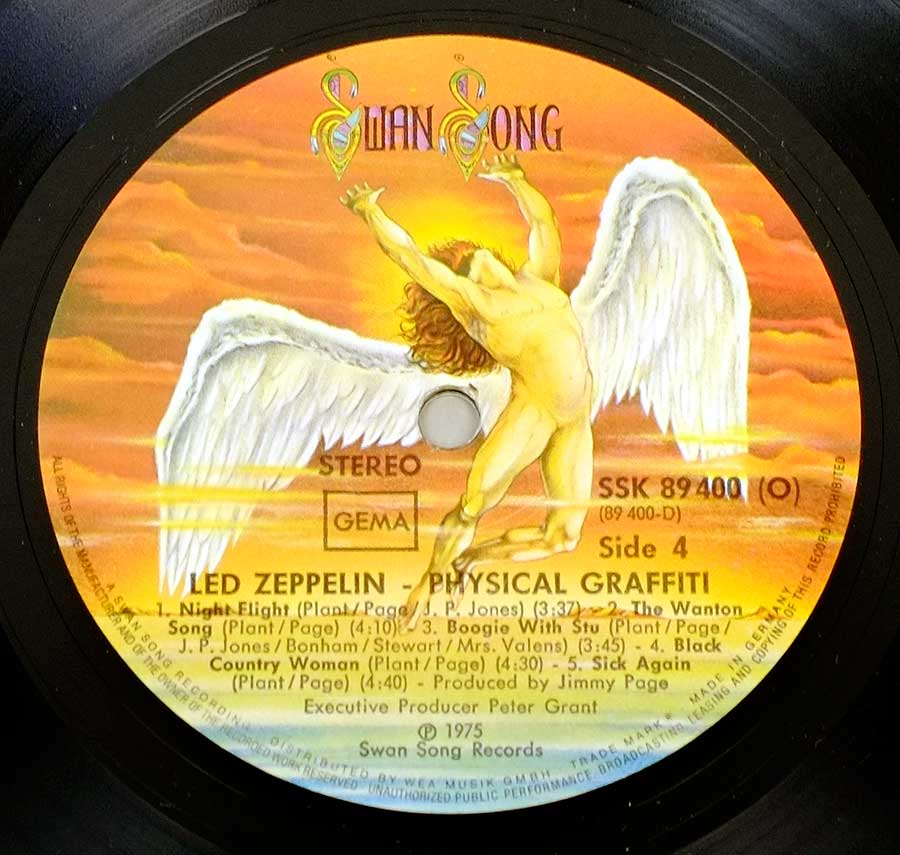Album Description:
The world of music has witnessed countless legendary bands and artists who have left an indelible mark on the industry. Led Zeppelin, one of the most influential rock bands of all time, stands tall among them. Led Zeppelin's sixth studio album, "Physical Graffiti", released in 1975, is not only a musical marvel but also a visual treat. With its iconic die-cut cover design and intricate packaging, the album holds a special place in the hearts of fans and collectors alike. Produced by Jimmy Page and Peter Grant, and recorded at Headley Grange, Hampshire, England, during January and February 1974, this double LP album showcases the band's musical prowess and creativity. Let us delve into the details of this masterpiece.
Die-Cut Cover Design:
The cover design of "Physical Graffiti" is an integral part of its allure. Designed by Peter Corriston, it features a unique die-cut design that reveals a series of windows through which various images can be seen. This artistic approach not only captured the attention of fans but also highlighted the band's commitment to pushing boundaries and delivering an immersive experience. The album cover stands as a testament to Led Zeppelin's willingness to experiment and create something truly extraordinary.
Thick Paper Custom Inner Sleeves:
Adding to the album's charm, "Physical Graffiti" includes the original thick paper custom inner sleeves with artwork and photos. These inner sleeves serve as a visual extension of the music contained within. Led Zeppelin understood the importance of aesthetics in creating a comprehensive experience for their fans, and the inclusion of these custom inner sleeves further enhanced the album's allure.
Production and Sound Engineering:
With Jimmy Page and Peter Grant at the helm of production, "Physical Graffiti" was bound to be a sonic masterpiece. The album's sound engineering was skillfully handled by Ron Nevison, while Keith Harwood took charge of the sound mix at Olympia Studios in London. The collaboration of these talented individuals resulted in a rich and dynamic sound that resonates with the listener. The album showcases Led Zeppelin's ability to craft intricate compositions while maintaining a raw and powerful energy.
Captivating Photography:
"Physical Graffiti" not only captivates with its music but also with its visual aesthetics. The album cover features photography from Elliot Erwitt, B.P. Fallen, and Roy Harper Window Illustration Dave Hefferman. Each image tells a story and adds an extra layer of depth to the album's overall experience. The attention to detail and thought put into the album cover photography is a testament to Led Zeppelin's commitment to creating a holistic and immersive artistic endeavor.
Musical Brilliance:
Led Zeppelin's lineup for "Physical Graffiti" consisted of the legendary Jimmy Page on guitars, John Bonham on drums, John Paul Jones on bass and keyboards, and Ian Stewart on piano. The album's tracks showcase the band's diverse musical influences, ranging from hard rock and blues to folk and Eastern-inspired melodies. Led Zeppelin's ability to seamlessly blend various genres while maintaining their signature sound is evident throughout the album. Songs like "Kashmir", "Trampled Under Foot", and "In My Time of Dying" are just a few examples of the band's musical brilliance and innovation.
Trivia:
The building featured on the front cover of Led Zeppelin's "Physical Graffiti" is located at 96 and 98 St. Mark's Place in New York City. The intricate details of the building, including its unique windows, were captured in the album's cover art. This iconic structure became synonymous with the album, contributing to the visual appeal and mystique of "Physical Graffiti."
The building featured on the front cover of Led Zeppelin's "Physical Graffiti" is located at 96 and 98 St. Mark's Place in New York City. The intricate details of the building, including its unique windows, were captured in the album's cover art. This iconic structure became synonymous with the album, contributing to the visual appeal and mystique of "Physical Graffiti."
Today this is known as the "Led Zeppelin House" and has become a tourist attraction. View on Google Maps
|
|
Music Genre:
Hard Rock / White Blues
|
|
Album Production information:
The album: "LED ZEPPELIN - Physical Graffiti " was produced by:
Jimmy Page and Peter Grant
Sound/Recording Engineer(s): Ron Nevison
Ron Nevison is a legendary American producer and sound engineer whose iconic work shaped the sound of '70s and '80s rock. Known for his collaborations with Led Zeppelin, Heart, Ozzy Osbourne, and more, he brought raw energy and polished perfection to countless albums. Learn more in the full biography.
Sound mix: Keith Harwood at Olympia Studios, London.
This album was recorded at: Headley Grange, Hampshire, England during January and February 1974
Album cover design: Peter Corriston
Album cover photography: Elliot Erwitt, B.P. Fallen, Roy Harper Window Illustration Dave Hefferman.
|
|
Record Label & Catalognr:
Swan Song Records SSK 89 400 (O) (89400)
Notice that the catalognr has "(O)" following it.
|
|
Packaging:
Die-cut cover design, This double LP album includes the original thick paper custom inner sleeves with artwork and photos.
|
|
Media Format: Double 12" Vinyl Stereo Gramophone Record
Total Album (Cover+Record) weight: 460 gram
|
|
Year & Country:
1975 Made in Germany
|
Personnel/Band Members and Musicians on: LED ZEPPELIN - Physical Graffiti
|
Band-members, Musicians and Performers
- Jimmy Page - Guitars
-
Jimmy Page – Guitars
Jimmy Page born January 9, 1944, is a legendary guitarist and the mastermind behind Led Zeppelin’s groundbreaking sound. Throughout the 1970s, his innovative riffs, masterful production, and electrifying live performances helped shape rock history. After Zeppelin disbanded in 1980, Page explored new projects, including The Firm and collaborations with artists like Paul Rodgers. His work in the ’80s kept his influence alive, cementing his status as a rock icon.
- Robert Plant - Lead Vocals
- Robert Plant – Lead Vocals Robert Plant, born August 20, 1948, is an English rock singer best known as Led Zeppelin’s iconic frontman. His soaring vocals and electrifying stage presence helped define hard rock and heavy metal. After Zeppelin disbanded in 1980, Plant pursued a diverse solo career, blending blues, folk, world music, and Americana. His relentless musical evolution cements his legacy as a rock pioneer who continues to push creative boundaries.
- John Bonham - Drums
-
John Bonham – Drums
John Bonham, (1948-1980) was Led Zeppelin’s powerhouse drummer, renowned for his thunderous sound, speed, and groove. His playing defined rock drumming in the 1970s, with tracks like Moby Dick and When the Levee Breaks showcasing his unmatched technique. His explosive energy and innovative style made him irreplaceable. Tragically, his death in 1980 led to Zeppelin’s breakup, but his legacy as one of rock’s greatest drummers endures.
- John Paul Jones - Bass, Keyboards
-
John Paul Jones – Bass Guitar
John Paul Jones, born January 3, 1946, was the versatile bassist and keyboardist of Led Zeppelin, whose musicianship shaped the band’s dynamic sound. Throughout the 1970s, his innovative basslines, orchestral arrangements, and multi-instrumental skills added depth to classics like Ramble On and No Quarter. After Zeppelin disbanded in 1980, he pursued production, film scores, and collaborations, cementing his legacy as a rock and musical innovator.
- Ian Stewart - Piano
Ian Stewart- Piano (full-name: Ian Andrew Robert Stewart, co-founder of the Rolling Stones and active band-member until 1963. Later he became their road-manager and guest musician on piano, organ, marimba and percussion and has been performed with many other bands including George Thorogood, Led Zeppelin and others)
- Mrs Valens
|
